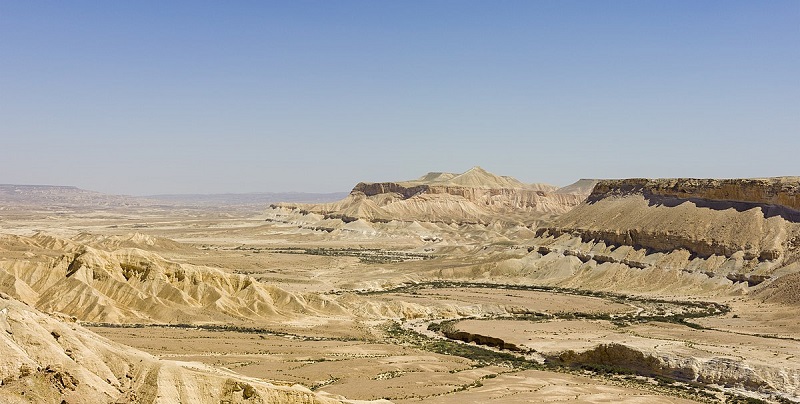A solar-plus-storage tender held by Israel attracted alternative energy-storage tech, in addition to the anticipated lithium-ion systems.
Augwind, an Israeli air compressor and energy storage business, said it secured a 120 MWh slice of the storage capacity awarded and has signed a memorandum of understanding with the local unit of French energy giant EDF to install its proprietary AirBattery technology alongside a 5 MW solar array.
The state-owned Israeli Electricity Company (IEC) awarded 33 project contracts in the procurement exercise, amounting to 608 MW of solar generation capacity and 2.4 GWh of storage, with the winning bidders securing 23-year IEC power purchase agreements. The solar electricity price secured was ILS0.1745/kWh ($0.0544). The successful projects must be completed by July 2023.
Augwind said its technology reaches 75-81% efficiency for systems of at least 5 MW capacity. That is less than lithium-ion battery storage but compressed air systems are said not to degrade and to therefore benefit from effectively unlimited cycling.
The AirBattery works by using renewable electricity to compress air to seven bars of pressure in underground storage tanks. The air can be released when needed, turning a turbine to generate electricity.
A levelized cost of electricity of $0.05/kWh, plus 75-81% storage system efficiency, are significant landmarks for compressed air storage.
A study produced by the University of Edinburgh into the seasonal clean energy storage capacity of British saline aquifers estimated investment of $16-59 million into compressed air storage facilities would enable 77-96 TWh of renewable electricity to be stored for two months. Based on storage system efficiency of 54-59%, that would mean seasonally stored electricity with a levelized cost of electricity of $0.42-4.71/kWh.
Eco-friendly
“The data presented by Augwind today is excellent news for the world of renewable energies in general and the world of energy storage in particular, both in comparison with lithium batteries and alternative storage solutions,” said Augwind chief executive Or Yogev. “Augwind's AirBattery system has an energy efficiency that is generally similar to pumped storage stations' efficiency.
Compared to a storage system based on lithium batteries, despite their higher initial efficiency, lithium batteries have an obvious disadvantage in that their efficiency and structural capacity fade over the years and necessitate replacement and upgrade for a new storage system every few years or cycles. In addition, lithium-ion systems contain chemical components, some of which are not recyclable, while Augwind's solution is designed for decades, while also being green, environmentally friendly, and based solely on water and air.”
This content is protected by copyright and may not be reused. If you want to cooperate with us and would like to reuse some of our content, please contact: editors@pv-magazine.com.




In the text I didn’t quite understand the following statement:
” … that would mean seasonally stored electricity with a levelized cost of $0.42-4.71/kWh.”
Is this the “levelized cost of storage” ?
If so, it is much more than the LCOS with Li batteries.
Hi Alfred,
thanks for your question. You are right, the $0.42-4.71/kWh are more than what LIBs normally achieve, and significantly more than what has been achieved in this Israeli project. The $0.42-4.71/kWh figure comes from a research project of the Uni of Edinburgh and was included in the text as a comparison.
Excellent article which enlightened general public
The Augwind project is superb. Congratulations an being awarded the contract for another green, environmentally friendly CAES system.
Our company are currently providing specialist consultation and modelling services to 70% of the Hydrogen storage projects on the EU’s ten-year network development plan (TYNDP), and have active projects totalling 1.6GW, with 2.1GW in the pipeline and are part of an international consortium with Eurowind Energy and Energinet to build one of the world’s largest green hydrogen production plants, which will include underground hydrogen storage, in the area between Hobro and Viborg in Denmark.
The Green Hydrogen Hub, assisted by Procorre will support Denmark’s green transition and contribute to the European climate neutral goals by potentially displacing 600,000 tonnes of CO2 per year. To read more please visit the Hydrogen Hub website: https://greenhydrogenhub.dk
CAES and hydrogen, the way forward.
Those who have eyes…. will see… if they want…..
Using CAES… specially WITH HEAT RECOVERY….. IS “THE SOLUTION” TOGETHER WITH HYDRO/PUMPED STORAGE FOR GLOBAL ENERGY STORAGE OF 40,000TWHrs/yr by 2050…
Hydrogen is a possible option too… if “explosion” issues can be handled in a widely disbursed system all over the Globe… that a Global ZERO POLLUTION SOLUTION will need…
Way to go Augwind and EDF…
WELL DONE…